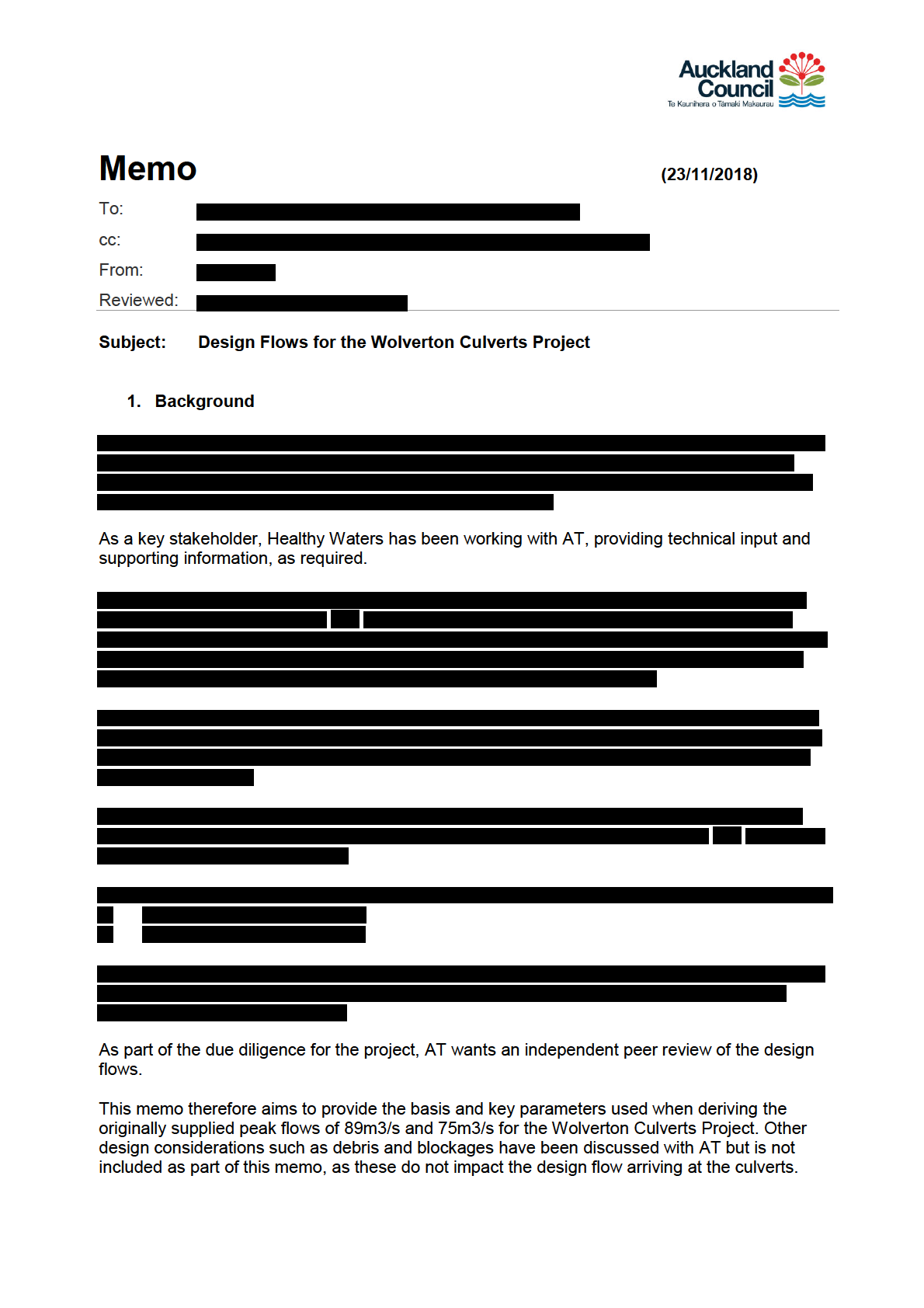
2. Healthy Waters Design Flow Requirements
Healthy Waters’ requirements for culvert design and flow requirements are set out as per the
Auckland Council Code of Practice for Land Development and Subdivision Chapter 4 –
Stormwater V2.0 2015 (SW CoP). Occasionally, additional consideration or deviation to the SW
CoP may be required, and should be assessed on a case by case basis.
Below listed some of the key criteria required by Healthy Waters for culvert design.
• As per section 4.3.9.8 in Auckland Council SW CoP,
“The culvert shal be designed to
cater for the flows and water levels generated by the 1% AEP event without affecting
upstream or downstream property.”
• As per section 4.3.5.2 in Auckland Council SW CoP,
“Secondary systems shal be
designed to accommodate the 1% AEP design storm event assuming the conditions listed
in Section 4.3.5.6.”
• As per section 4.3.5.1 in Auckland Council SW CoP,
“For larger catchments, or where
significant storage elements (such as ponds) are incorporated, surface water runoff shall
be determined using an appropriate hydrological and/or hydraulic model to the approval of
Auckland Council.”
3. The Design Flow Basis and Key Parameters
The 100yr design peak flow numbers extracted from the Healthy Waters Whau catchment
models, and as advised to AT on Monday 12 November, are 89m3/s for Wolverton No.1 culvert
and 75m3/s for Wolverton No.2 culvert.
The flows were based on a number of key parameters, as listed below:
1) The peak flow rates have been derived from assessing both the detailed Whau East
Catchment Model and the rapid flood hazard analysis (RFHA) model for the Whau
Catchment.
a) In the detailed catchment model, major stream and network constraints were removed
upstream of the culverts, before the flows were extracted at the culvert sites. This
provides more conservative peak flows as some upstream attenuation and storage areas
were removed.
b) The more conservative RFHA model was also used to compare and adjust the peak flow
numbers extracted from the detailed model.
c) The supplied peak flow numbers of 89m3/s and 75m3/s, were based on the results of
both models.
2) Imperviousness
a) The imperviousness assumption in the detailed catchment model is based on spatial
location of each unitary plan zone & its individual impervious % allowances. The
combined % for our detailed model is approximately 60%, as there are large open areas
such as golf course and parks, etc.
b) In the RFHA model, a catchment wide imperviousness of 70% and an initial condition of
‘all storage areas filled’ was assumed. 70% imperviousness is generally considered to be


provide a good estimate for the 100-year MPD scenario. The supplied flows meet Healthy Waters
requirements for culvert design purposes.
Kind Regards,
Catchment Planning Team
Healthy Waters | Infrastructure & Environmental Services
Visit our website: www.aucklandcouncil.govt.nz


